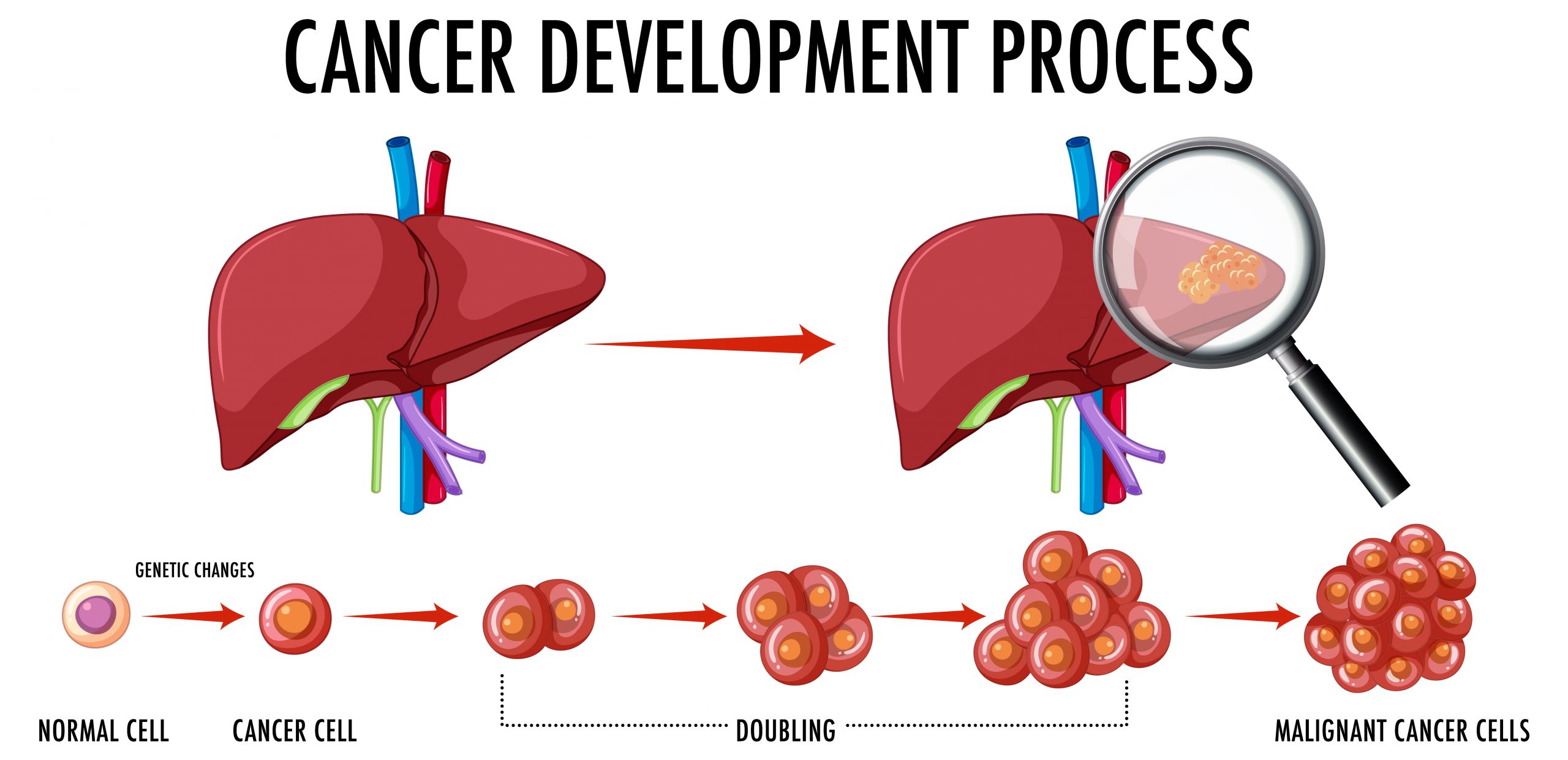

Doctors have long been perplexed by a riddle at the heart of fibrolamellar carcinoma, a rare and deadly form of liver cancer that primarily affects adolescents and young people. Fibrolamellar carcinoma, like more prevalent liver malignancies and liver failure, can result in an ammonia surge, which can lead to coma and death. Surprisingly, traditional techniques for addressing ammonia surges in other liver illnesses are proven useless in fibrolamellar.
New research published in Science Advances may help to solve this riddle, with findings indicating that the fibrolamellar ammonia increase is at least partially caused by the tumor itself. Scientists have gained new insight into the underlying biology and therapeutic sensitivity of these cancer cells by identifying the proteins and metabolites that are unique to fibrolamellar tumors.
“We’re seeing a very distinctive change in the proteins of the cancer cells,” says Sanford Simon, the Gunter Blobel professor at Rockefeller. “Our observations help explain some of the physiological changes in fibrolamellar, and also some of the pathological changes—including high levels of ammonia, which is a leading cause of death in fibrolamellar carcinoma.”
A decade of living with fibrolamellar carcinoma
Simon began looking into fibrolamellar cancer more than a decade ago, shortly after his 12-year-old daughter Elana was diagnosed with the rare liver cancer. In conjunction with Elana, the Simon lab quickly uncovered a mutation common to many fibrolamellar patients, which was later shown to be a promising therapeutic target for treating cancer in mice. Simon and colleagues have also led the charge in screening authorized medicines for fibrolamellar carcinoma effectiveness.
The disease nonetheless remains essentially untreatable, and often lethal—particularly when ammonia levels begin to spike. “A lot of fibrolamellar patients are dying from high ammonia,” Simon says. “They get confused, disoriented, end up in a coma, and often that’s the cause of death.” Yet time and again, standard treatments for high ammonia fail to work in fibrolamellar.
Simon and colleagues used mass spectrometry to investigate the proteomes (the whole complement of proteins) and metabolomes (complement of metabolites) of these puzzling malignancies. Many proteins in the cells were discovered to be quantitatively different from those seen in healthy tissue or even other liver cancer, with surprising consistency across samples. “These proteomes were so distinctive that we could tell when a sample had been misidentified as fibrolamellar just by looking at protein,” Simon adds. Surprisingly, about half of the protein alterations occurred in tumor cell mitochondria, a crucial organelle for ammonia clearance and production.
Ammonia vs. Ammonia
Perhaps the most important discovery was that the hallmark mutations in fibrolamellar revolved on how the body regulates ammonia levels. “All of the top metabolites inside the tumor were associated with ammonia metabolism, and they were drastically altered,” Simon adds.
The fibrolamellar cells also showed significantly higher levels of glutaminase, an enzyme that converts glutamine to ammonia. This shows that fibrolamellar not only limits the liver’s ability to eliminate ammonia indirectly, but also directly contributes ammonia to the body, which may explain why eliminating even a portion of the fibrolamellar tumor has been proven to reduce ammonia levels.
“Not only is fibrolamellar failing to consume ammonia, it’s also generating ammonia,” Simon says. “That’s a strong argument in favor of taking out some of the tumor, even if you can’t take all of it, to reduce the ammonia load—and the chance of an ammonia-induced coma.”
That the tumor is producing ammonia would also explain why some liver treatments (which focus on breaking down ammonia in the gut) have fallen flat, while others have shown promise. “A number of patients came out of comas after their physicians switched from treatments that target gut ammonia to treatments that target ammonia throughout the body,” Simon says.
The researchers believe that their discoveries will have an impact on the greater field of cancer biology and ammonia metabolism studies. It would not be the first time that a careful examination of a rare malignancy yielded broadly applicable results. Tumor suppressor genes were discovered in uncommon retinoblastomas, while a specific enzyme that is now implicated in many malignancies was discovered in a rare glioblastoma. The current study’s thorough examination of ammonia metabolism via the lens of a rare malignancy could lead to the discovery of previously unknown pathways.
“Basic research tells us about the pathology of the disease, but it goes both ways,” Simon says. “Disease pathology also teaches us about the basic physiology of the human body, and fibrolamellar may well end up giving us a better understanding of ammonia metabolism itself.”
more recommended stories
 Poor Kidney Function and Alzheimer’s Biomarkers Explained
Poor Kidney Function and Alzheimer’s Biomarkers ExplainedPoor kidney function may influence levels.
 Walking Speed Before Hip Replacement Predicts Recovery
Walking Speed Before Hip Replacement Predicts RecoveryNew Evidence Points to a Simple,.
 Neuroblastoma Drug Combo Extends Survival in Models
Neuroblastoma Drug Combo Extends Survival in ModelsA Promising Shift in High-Risk Neuroblastoma.
 How Soybean Oil Impacts Weight Gain and Metabolism
How Soybean Oil Impacts Weight Gain and MetabolismWhy Soybean Oil May Affect Metabolism.
 Coffee and Cognitive Function: Evidence Review
Coffee and Cognitive Function: Evidence ReviewA new narrative review in Cureus.
 Colorectal Cancer Screening Rates Low in Adults 45–49
Colorectal Cancer Screening Rates Low in Adults 45–49Recent UCLA research reveals that colorectal.
 Gut Immune Cells and Long-Lasting Antiviral Protection.
Gut Immune Cells and Long-Lasting Antiviral Protection.Breakthrough Findings on How Gut Immune.
 Mild Pancreatic Duct Dilatation Signals Higher Cancer Risk
Mild Pancreatic Duct Dilatation Signals Higher Cancer RiskEarly Structural Changes Offer Critical Clues.
 How the Uterus Senses Force During Labor: New Insights
How the Uterus Senses Force During Labor: New InsightsA new study published in Science.
 Fat-Free Mass and Brain Outcomes in Preterm Babies
Fat-Free Mass and Brain Outcomes in Preterm BabiesEarly Fat-Free Mass May Hold the.

Leave a Comment